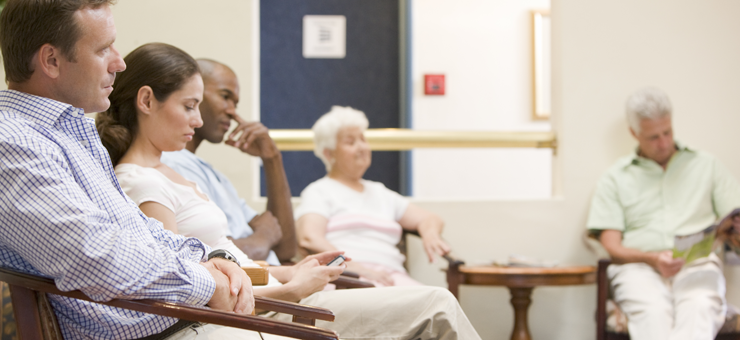Patients are increasingly relying on online reviews to determine doctors’ wait times, prior to making an appointment. According to recent research, the issue plays an essential role in patient satisfaction and retention.
Software Advice, a company that reviews electronic medical records, and publishes primary research on its website, surveyed 5,003 U.S. patients to find out what would reduce their frustration with wait times?
Some of the results included the following:
- If they were informed how long the wait was likely to be, 80 percent of patients would be less frustrated.
- Annoyance would decrease to 70 percent of patients if they received a personal apology from their doctor for the wait.
- 41 percent of patients would be open to visiting a different doctor in the practice to decrease their wait time.
Surprisingly, the techniques that are the easiest for medical practices to implement are also the most effective. Telling a patient in advance how long their wait will be and apologizing for the delay, can be easily incorporated into a practice’s workflow without incurring a cost.
Because so many patients would be willing to visit another doctor in the practice to reduce their wait time, it might be worth offering this option to patients whose primary physician is running late.
Patients also said that making improvements to a medical practice’s waiting room would lessen their frustration. For example, 64 percent of patients surveyed said their stay would be more pleasant with a TV in the waiting room, and 60 percent said free WiFi would help, as would complimentary food and beverages.
Other important takeaways from the survey include the fact that 45 percent of patients spend less than 15 minutes in the waiting room, and 85 percent are seen within 30 minutes. Yet 15 percent are waiting for 30 to 60 minutes or more.
The national average for patient wait time is 20 minutes. Although nearly half the patients surveyed wait less than this, 97 percent of those surveyed still say they are frustrated with wait times. However, the survey found that most still aren’t willing to pay more for faster service: Only 22 percent said they would be willing to pay a small fee to be seen more quickly.
This survey was handled via Google Consumer Surveys and consisted of 10 questions, each of which was answered by more than 500 unique respondents.

Join the Discussion!